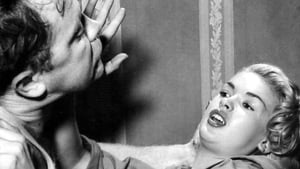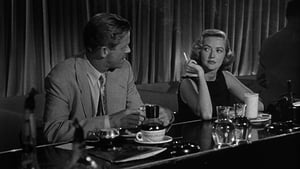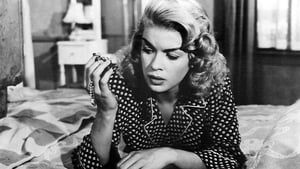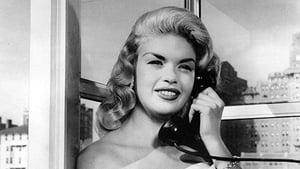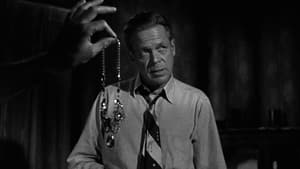Contact: info@alwanfilm.com
Video Sources 0 Views
- Watch trailer
- The Burglar

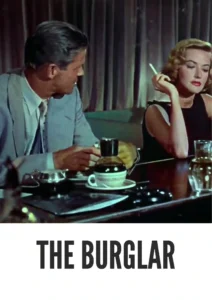
Synopsis
Table of Contents
ToggleThe Burglar 1957 Colorized: A Review

Introduction
In the vast landscape of classic cinema, “The Burglar” emerges as a hidden gem, showcasing the talents of its cast and crew while providing audiences with a gripping narrative set against the backdrop of 1950s Philadelphia. However, the recent release of an early colored version of this noir thriller has sparked renewed interest in the film, raising questions about the impact of colorization on cinematic classics. In this article, we delve into the world of “The Burglar 1957,” examining its director’s vision, the standout performances of its actors, and the controversy surrounding its colorized release.
Check The Full Colorized Movies List
Check Our Colorized Movies Trailer Channel
Understanding The Burglar 1957 Colorized: Director, Cast, and Genre
Directed by Paul Wendkos, “The Burglar” is a quintessential example of the film noir genre, characterized by its moody atmosphere, morally ambiguous characters, and suspenseful plot twists. Wendkos’ direction imbues the film with a sense of tension and unease, keeping audiences on the edge of their seats from start to finish.
The film features a stellar cast led by Dan Duryea, who delivers a captivating performance as Nat Harbin, the mastermind behind a daring jewelry heist. Jayne Mansfield shines as Gladden, a femme fatale whose beauty masks a cunning intellect. Together with a supporting cast of seasoned character actors, they bring the seedy underbelly of Philadelphia to life with mesmerizing authenticity.
Exploring the World of The Burglar 1957 Colorized: Plot and Characters
Set against the backdrop of a bustling cityscape, “The Burglar” follows a group of professional thieves led by Nat Harbin as they plan and execute a daring heist at a luxurious mansion. However, their carefully laid plans are soon thrown into disarray when they encounter unexpected obstacles and betrayals along the way.
The characters in “The Burglar” are richly drawn and multi-dimensional, with each member of the ensemble cast bringing their own unique motivations and desires to the table. Nat Harbin is a charismatic yet morally ambiguous figure, driven by a desire for wealth and power. Gladden, the enigmatic femme fatale, exudes a sense of danger and allure, keeping both the audience and her fellow thieves guessing until the very end.
The Art of Film Colorization
Film colorization is a controversial process that involves digitally adding color to black and white films, with the aim of enhancing their visual appeal and modernizing their aesthetic for contemporary audiences. While some view colorization as a way to breathe new life into old classics, others argue that it detracts from the original artistic vision of the filmmakers.
Early Colored Films: A Brief History
The history of colorization dates back to the early days of cinema, with filmmakers experimenting with hand-painted frames and tinting techniques to add color to their films. However, it wasn’t until the advent of advanced digital technologies in the late 20th century that colorization became a widespread practice in the industry.
The Burglar 1957 and Its Early Colored Version
In a bold move, the producers of “The Burglar” decided to release an early colored version of the film, hoping to attract a new generation of viewers and breathe new life into the classic noir thriller. While purists may argue that colorization undermines the integrity of the original work, others see it as an opportunity to introduce timeless classics to a wider audience.
The Debate Over Film Colorization
The debate over film colorization has raged on for decades, with passionate arguments on both sides of the issue. Proponents of colorization argue that it allows audiences to experience classic films in a new and exciting way, while opponents believe that it erases the historical and artistic significance of black and white cinema.
Examining The Burglar 1957 as an Early Colored Film
As with any colorized classic, the question remains: does the addition of color enhance or detract from the viewing experience? In the case of “The Burglar 1957,” the early colored version offers a fresh perspective on the film’s visual aesthetic, adding depth and richness to its atmospheric cinematography. While purists may prefer the original black and white version, the colorized edition provides an opportunity for new audiences to discover and appreciate the film’s timeless appeal.
Influence and Legacy: The Burglar 1957 Colorized’s Impact on Cinema
“The Burglar 1957” has left an indelible mark on the world of cinema, inspiring countless filmmakers and influencing the evolution of the film noir genre. Its gripping storyline, memorable characters, and atmospheric cinematography continue to captivate audiences decades after its initial release, cementing its status as a true classic of the genre.
Director’s Cinematic Legacy: Beyond The Burglar 1957 Colorized
Paul Wendkos’ contributions to cinema extend far beyond “The Burglar 1957,” with a diverse body of work that encompasses everything from crime thrillers to romantic dramas. His innovative storytelling techniques and keen eye for detail have left an indelible mark on the medium, inspiring future generations of filmmakers to push the boundaries of cinematic expression.
Themes Explored in The Burglar 1957 Colorized
“The Burglar 1957” explores a variety of dark and gritty themes, including greed, betrayal, and the consequences of a life lived on the fringes of society. Its morally ambiguous characters and atmospheric setting make it a compelling exploration of the human condition, with universal themes that continue to resonate with audiences to this day.
Reception and Controversy Surrounding The Burglar 1957 Colorized
Upon its release, “The Burglar 1957” received mixed reviews from critics, with some praising its suspenseful plot and atmospheric cinematography, while others criticized its uneven pacing and lack of character development. However, the decision to release an early colored version of the film has sparked renewed interest in the classic noir thriller, with audiences eager to experience its timeless appeal in a new and exciting way.
Where to WatchThe Burglar 1957 Colorized Online
For those eager to experience the allure of “The Burglar 1957,” the film is readily available on popular streaming platforms such as Amazon Prime, iTunes, and Google Play. Whether watching in its original black and white format or the early colored version, audiences are sure to be captivated by its gripping storyline, memorable performances, and atmospheric cinematography.
FAQs About The Burglar 1957 Colorized
- Q: Is “The Burglar 1957” based on a true story?
- A: While the film is not directly based on a true story, it draws inspiration from real-life events and experiences in 1950s Philadelphia.
- Q: Who composed the iconic score for “The Burglar 1957”?
- A: The film’s haunting score was composed by Sol Kaplan, adding to its atmospheric ambiance and tension.
- Q: Are there any notable differences between the original black and white version and the early colored version of “The Burglar 1957”?
- A: While the overall storyline remains the same, the early colored version offers a visually enhanced experience, with vibrant hues and richer textures.
Conclusion
In conclusion, “The Burglar 1957” remains a timeless classic of the film noir genre, captivating audiences with its suspenseful plot, memorable characters, and atmospheric cinematography. Whether viewed in its original black and white format or the early colored version, the film continues to resonate with viewers, offering a compelling exploration of greed, betrayal, and the consequences of a life lived on the edge.
While the debate over film colorization may persist, one thing remains certain: the enduring legacy of “The Burglar 1957” is a testament to its status as a cinematic masterpiece for the ages. So, whether you’re a seasoned cinephile or a newcomer to the world of classic cinema, be sure to experience the allure of “The Burglar 1957” for yourself, and discover why it remains an essential entry in the pantheon of cinematic masterpieces.
